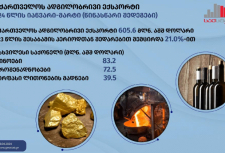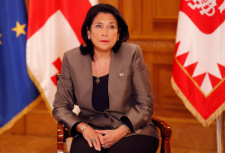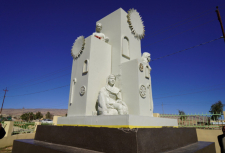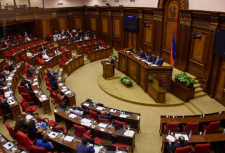The book «Prayer for the Yazidis»
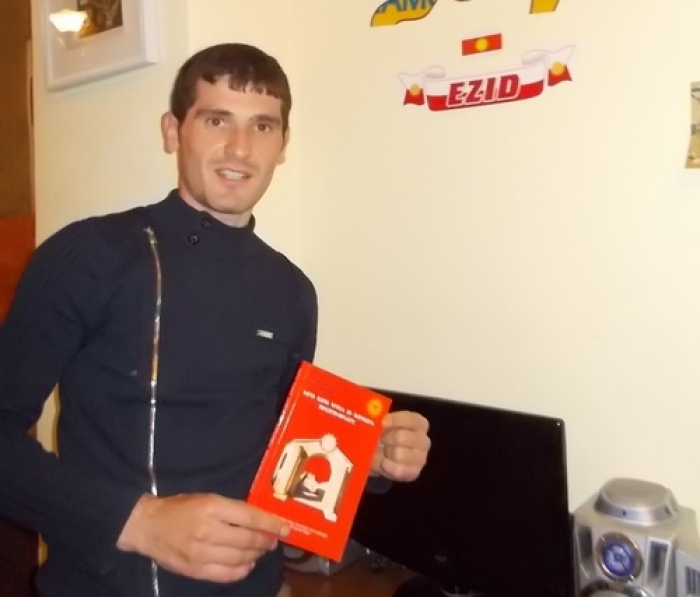
For the first time, a book about the Yazidis, their religion and customs was published for the General reader. The authors of the book, published in the first edition in Armenian, are Roman Avdoyan and Emma Sadoyan:
"When creating the book, we tried to tell as simply as possible about caste divisions, the meaning of numbers, the essence of our religion and customs. And most importantly, explain that the Yazidis believe in one God, who is the Creator of the Universe, " said the co-author of the book. In the process of compiling the book, the prayers of the Yazidis, called "Kolm", were studied. The prayers of the Yazidis are transmitted by the spiritual representatives of this people mainly by word of mouth. The Yazidis have several Kolm prayers. They are called "DOA", "Drosha", "Tarkin", "Shadati", "Mat and Sena". Yazidis are divided into three castes and lay people, who are called mrids, who do not need to know all the prayers of "Qawla". They are read by purely spiritual representatives of the Yazidis-Shehi and Pira.
The first prayers in the Sharfadin religion date back to the time of the creation of angels, who occupy a special place in this religion. The prayers were composed, according to the authors of the book, in the Iraqi Lalish sacred to the Yazidis and in those days were called "Kavli Marga", which means "prayers of Holy places" in Yazidi. The second stage of the compilation of prayers fell on the XII century. The prayers of the Sharfadeen religion introduce laws, morals, customs and rituals, and also tell about Jesus Christ, Noah, Moses, Abraham, Zarathustra and Mohammed. The structure of prayers is very complex. It is not enough to cram them, but to give an explanation of each line.
Morning and evening prayers are obligatory. Early prayer – Sadat SVA zu – pronounced with the dawn as soon as the person wakes up, washes. He must face the East, raise both hands to the sun, and begin to pray. Morning prayer ends with the same saying – "Azizam AZ someone, Tamam". Evening prayer – Sadat Mare – pronounced already in bed, lying on his back. Only hands here already are placed on a thorax. Prayer is the most important part of the spiritual life of the Yazidis, because they believe that in the transition to the other world, the two angels of death – Nasrdin and Sjadin-will ask Yazid about his religious life.
It further States about the importance of numbers in religion, Sharfadin. One of the innermost is the number 3. So the Yazidis must comply with three prohibitions - a ban on marriage ties between castes, a ban with adherents of other religions and a ban on disrespectful attitude or insult one caste to another. The figure three is present in the holidays of the Yazidis. Before each of the holidays, fasting is observed for three days. And even the Wake is held at the Yazidis for three days after the burial of the deceased. It is noteworthy that the self-names of the Yazidis are also three. The authors of the book say that in the first prayer books Yazidis are called first "Mtkhaira", which translated from Yazidi means " I am obliged (religion)", later "Adabi", meaning "law" (Yazidis also call the first man Adab, as we call Adam) and the third name is "Ezdi", which translates as "to see God's way". According to Sharfadin religion, God has 3003 names. But mostly Yazidis, speaking about God, call him by the name of Hade.
Caste divisions are also presented in great detail in the book. The Yazidis have two spiritual (Sheh and Pirs ) caste and one of the laity (Mrid). The authors tell about the main religious holidays and customs. In the Sharfadeen religion, sacrifices are made after prayers. The reader can also get acquainted with the role and duties of Yazidi clerics, as well as learn about the shrines and sacred places of this people.
In the modern world, according to various sources, the number of Yazidis is about 2 million people, mainly living in Iraq, Syria, Russia, Armenia, Georgia. The cradle of their homeland Yazidis consider Holy Lalish (Iraqi province of Sinjar or Shangal). In August 2014, in the area of Sinjar, is militants physically killed many Yazidis who refused to convert to Islam. More than 350 thousand Yazidis became refugees, 70 thousand of them were forced to hide in the mountains, thousands of women were sold into sexual slavery by terrorists. Avdoyan's book also tells about the genocide of the Yazidi people in the course of world history.
Tags:
The book «Prayer for the Yazidis»

For the first time, a book about the Yazidis, their religion and customs was published for the General reader. The authors of the book, published in the first edition in Armenian, are Roman Avdoyan and Emma Sadoyan:
"When creating the book, we tried to tell as simply as possible about caste divisions, the meaning of numbers, the essence of our religion and customs. And most importantly, explain that the Yazidis believe in one God, who is the Creator of the Universe, " said the co-author of the book. In the process of compiling the book, the prayers of the Yazidis, called "Kolm", were studied. The prayers of the Yazidis are transmitted by the spiritual representatives of this people mainly by word of mouth. The Yazidis have several Kolm prayers. They are called "DOA", "Drosha", "Tarkin", "Shadati", "Mat and Sena". Yazidis are divided into three castes and lay people, who are called mrids, who do not need to know all the prayers of "Qawla". They are read by purely spiritual representatives of the Yazidis-Shehi and Pira.
The first prayers in the Sharfadin religion date back to the time of the creation of angels, who occupy a special place in this religion. The prayers were composed, according to the authors of the book, in the Iraqi Lalish sacred to the Yazidis and in those days were called "Kavli Marga", which means "prayers of Holy places" in Yazidi. The second stage of the compilation of prayers fell on the XII century. The prayers of the Sharfadeen religion introduce laws, morals, customs and rituals, and also tell about Jesus Christ, Noah, Moses, Abraham, Zarathustra and Mohammed. The structure of prayers is very complex. It is not enough to cram them, but to give an explanation of each line.
Morning and evening prayers are obligatory. Early prayer – Sadat SVA zu – pronounced with the dawn as soon as the person wakes up, washes. He must face the East, raise both hands to the sun, and begin to pray. Morning prayer ends with the same saying – "Azizam AZ someone, Tamam". Evening prayer – Sadat Mare – pronounced already in bed, lying on his back. Only hands here already are placed on a thorax. Prayer is the most important part of the spiritual life of the Yazidis, because they believe that in the transition to the other world, the two angels of death – Nasrdin and Sjadin-will ask Yazid about his religious life.
It further States about the importance of numbers in religion, Sharfadin. One of the innermost is the number 3. So the Yazidis must comply with three prohibitions - a ban on marriage ties between castes, a ban with adherents of other religions and a ban on disrespectful attitude or insult one caste to another. The figure three is present in the holidays of the Yazidis. Before each of the holidays, fasting is observed for three days. And even the Wake is held at the Yazidis for three days after the burial of the deceased. It is noteworthy that the self-names of the Yazidis are also three. The authors of the book say that in the first prayer books Yazidis are called first "Mtkhaira", which translated from Yazidi means " I am obliged (religion)", later "Adabi", meaning "law" (Yazidis also call the first man Adab, as we call Adam) and the third name is "Ezdi", which translates as "to see God's way". According to Sharfadin religion, God has 3003 names. But mostly Yazidis, speaking about God, call him by the name of Hade.
Caste divisions are also presented in great detail in the book. The Yazidis have two spiritual (Sheh and Pirs ) caste and one of the laity (Mrid). The authors tell about the main religious holidays and customs. In the Sharfadeen religion, sacrifices are made after prayers. The reader can also get acquainted with the role and duties of Yazidi clerics, as well as learn about the shrines and sacred places of this people.
In the modern world, according to various sources, the number of Yazidis is about 2 million people, mainly living in Iraq, Syria, Russia, Armenia, Georgia. The cradle of their homeland Yazidis consider Holy Lalish (Iraqi province of Sinjar or Shangal). In August 2014, in the area of Sinjar, is militants physically killed many Yazidis who refused to convert to Islam. More than 350 thousand Yazidis became refugees, 70 thousand of them were forced to hide in the mountains, thousands of women were sold into sexual slavery by terrorists. Avdoyan's book also tells about the genocide of the Yazidi people in the course of world history.
Tags:
